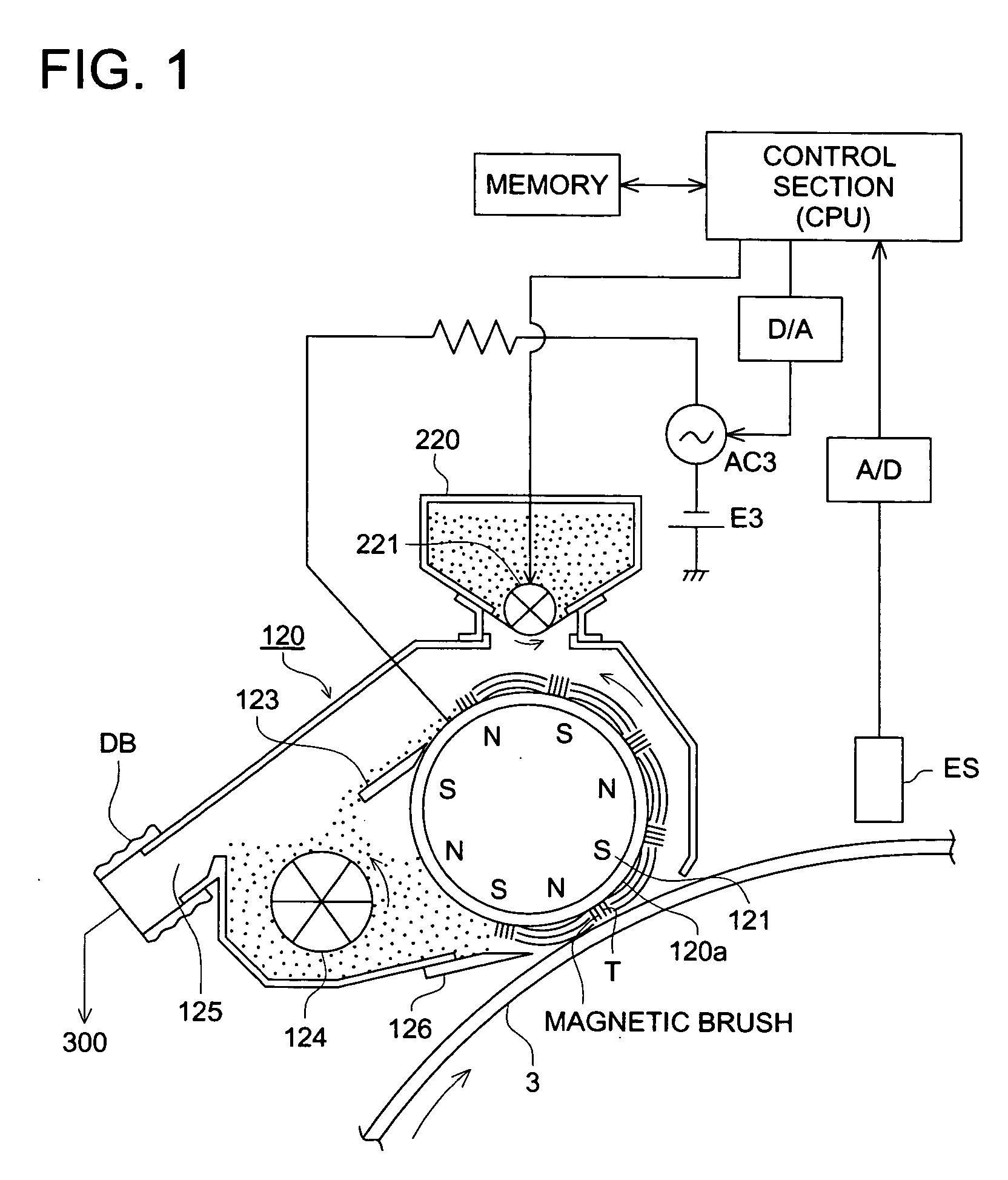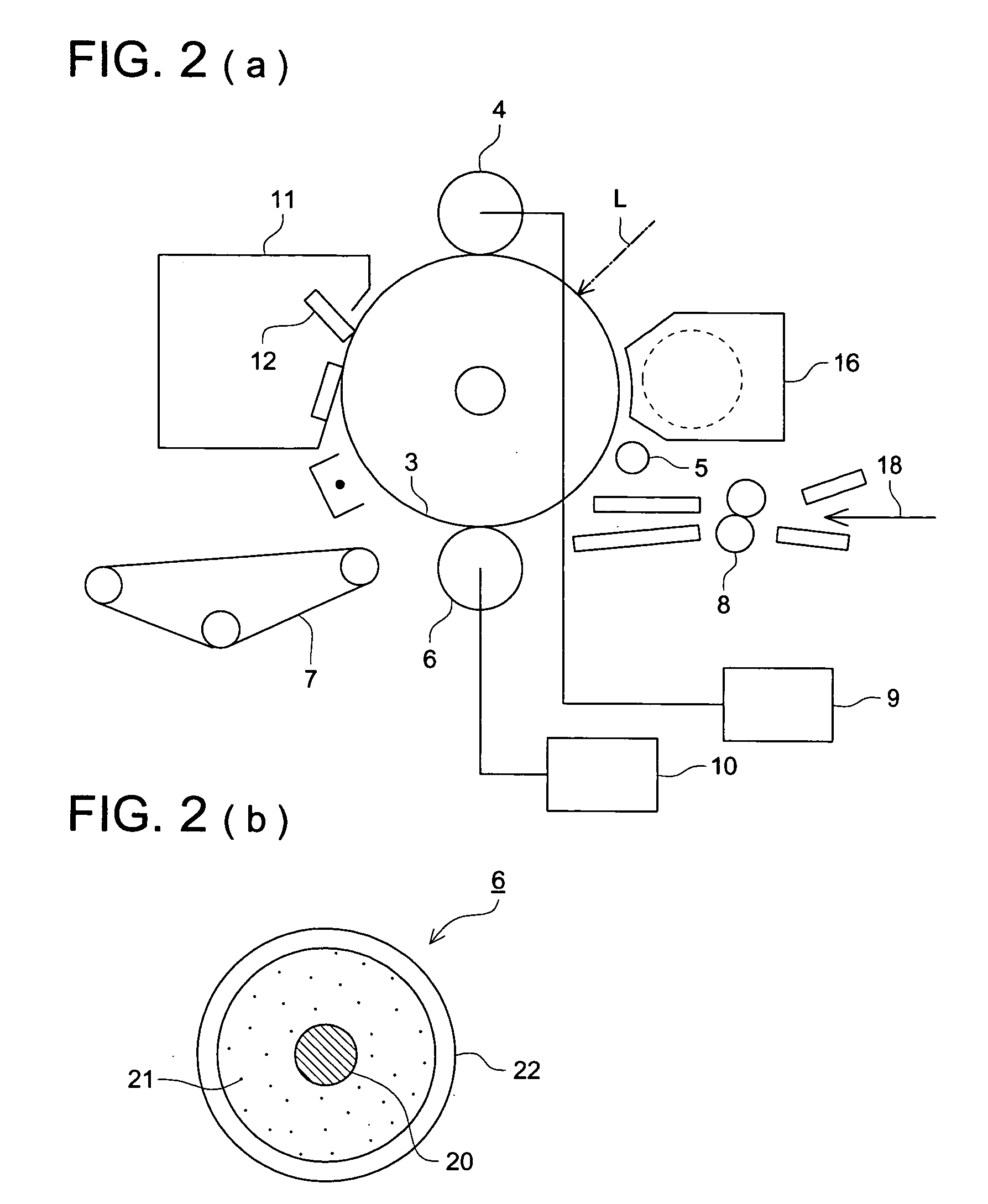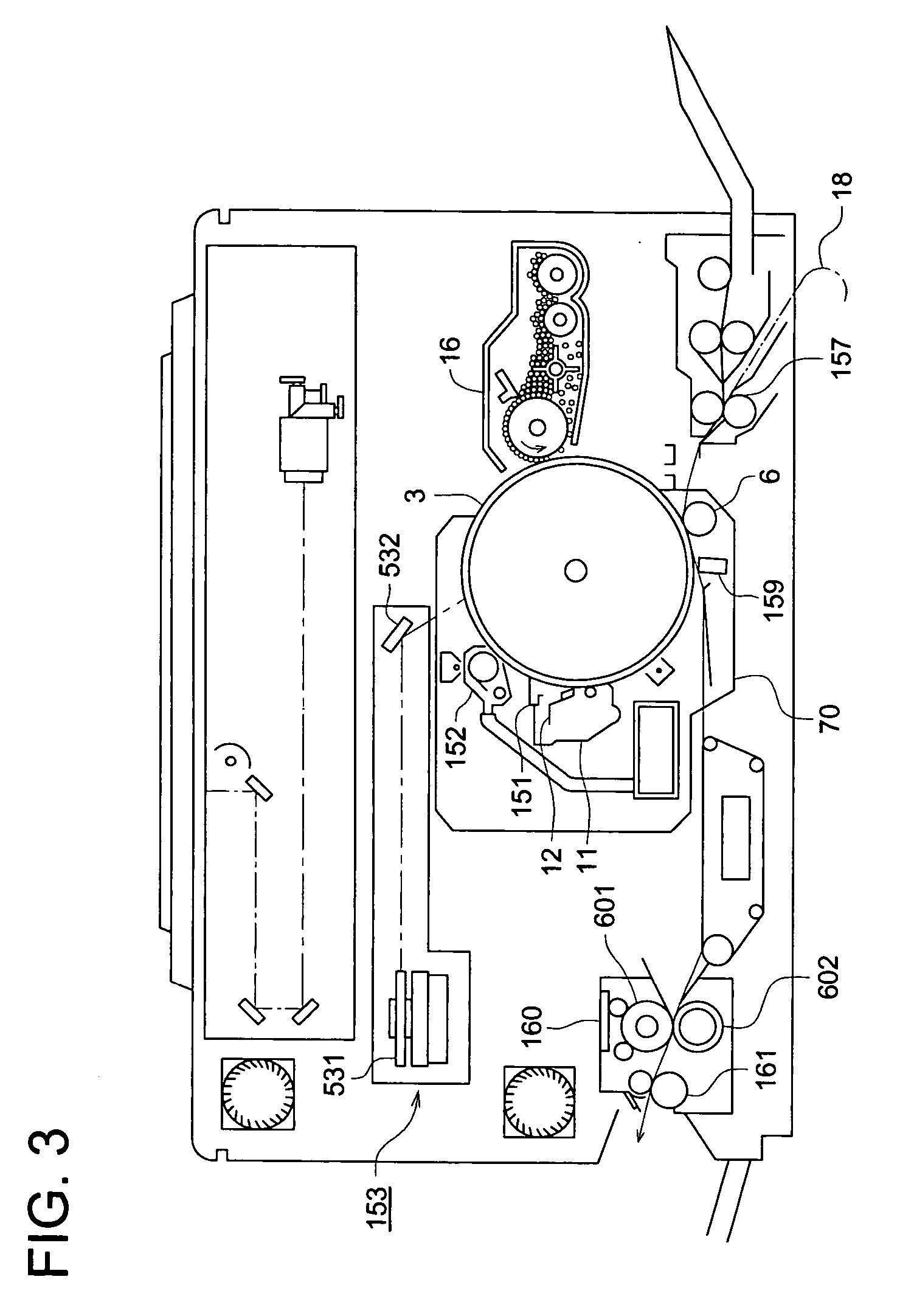Image forming apparatus and image forming method
a technology of image forming apparatus and image forming method, which is applied in the direction of electrographic process apparatus, instrumentation, corona discharge, etc., can solve the problems of deterioration of electrophotographic photoreceptor, adversely affecting human body, and large amount of ionized oxygen produced by high-voltage application of corona charger
- Summary
- Abstract
- Description
- Claims
- Application Information
AI Technical Summary
Benefits of technology
Problems solved by technology
Method used
Image
Examples
examples
[0184] The present invention will be further described based on examples but is by no mean limited to these examples.
Photoreceptor
Preparation of Photoreceptor 1
[0185] On a solid-drawn cylindrical aluminum substrate, the following interlayer coating solution was coated and dried to form a 0.5 μm thick interlayer.
Interlayer Coating SolutionPolyamide resin Amiran CM-8000 60 g(produced by Toray)Methanol1600 ml1-Butanol 400 ml
[0186] Next, using a sand mill, the following composition was dispersed over a period of 10 hr. to prepare a coating solution for a charge generation layer, as described below. This coating solution was coated on the foregoing interlayer by a dip coating method to form a 2 μm thick charge generation layer.
Coating Solution of Charge Generation LayerY-type titanyl phthalocyanine 60 gSilicone resin solution (KR5240 700 g15% xylene-butanol solution, producedby Shin-Etsu Chemical Co., Ltd.)2-butanone2000 ml
[0187] Finally, the following composition was mixed and d...
PUM
 Login to View More
Login to View More Abstract
Description
Claims
Application Information
 Login to View More
Login to View More - R&D
- Intellectual Property
- Life Sciences
- Materials
- Tech Scout
- Unparalleled Data Quality
- Higher Quality Content
- 60% Fewer Hallucinations
Browse by: Latest US Patents, China's latest patents, Technical Efficacy Thesaurus, Application Domain, Technology Topic, Popular Technical Reports.
© 2025 PatSnap. All rights reserved.Legal|Privacy policy|Modern Slavery Act Transparency Statement|Sitemap|About US| Contact US: help@patsnap.com



